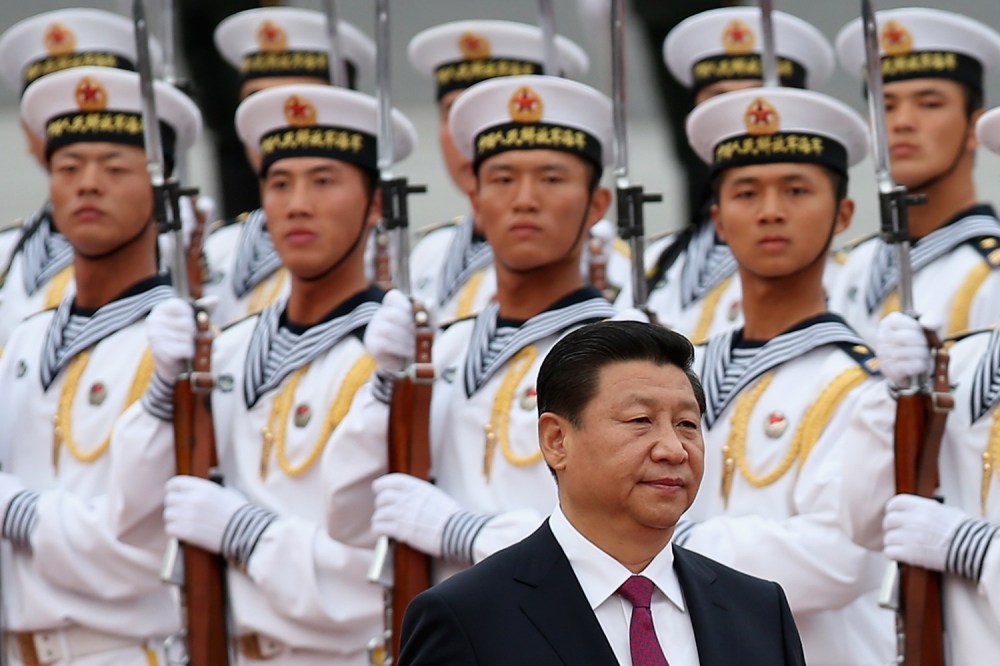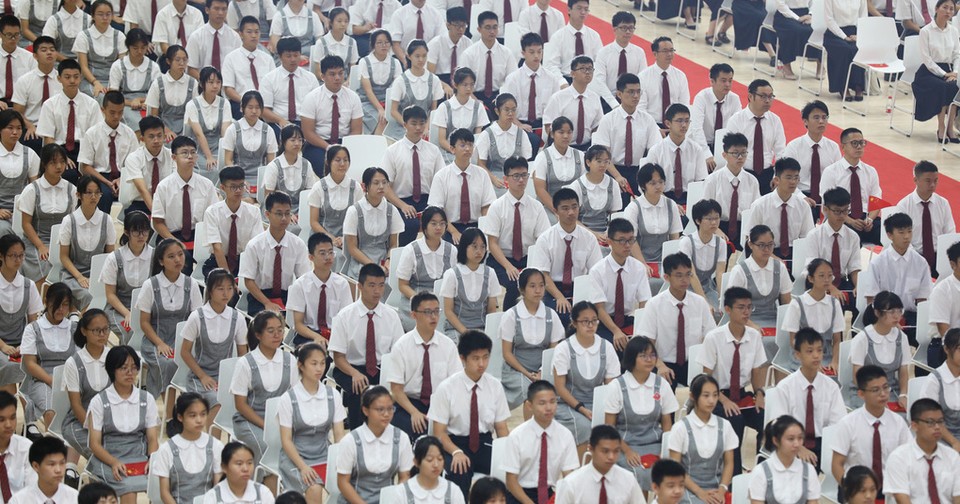space cadet
SENIOR MEMBER

Records Expose China’s Maritime Militia at Whitsun Reef
Beijing claims they are fishing vessels. The data shows otherwise.
Records Expose China’s Maritime Militia at Whitsun Reef
Beijing claims they are fishing vessels. The data shows otherwise.
BY ANDREW S. ERICKSON, RYAN D. MARTINSON | MARCH 29, 2021, 2:07 PMEven as dozens of Chinese “fishing vessels” strongly resembling the People’s Armed Forces Maritime Militia (PAFMM) have been anchoring at the disputed Whitsun Reef—without doing any fishing—within the Philippines’ Exclusive Economic Zone in the South China Sea, Chinese officials have responded to formal Philippine and U.S. concerns about maritime militia activities with denial and obfuscation. When pressed on March 22, Foreign Ministry spokesperson Hua Chunying deflected: “Chinese fishing boats have been fishing in the waters near the reef all along. Recently, due to maritime situation, some fishing boats have been taking shelter from the wind near [Whitsun Reef], which is quite normal.” Her Chinese Embassy Manila counterpart issued a direct denial: “There is no Chinese maritime militia as alleged.”
These statements are provably untrue. At the very least, seven PAFMM vessels have been operating at the Spratly Islands’ Union Banks, including Whitsun Reef—both during the past month and multiple times over the past year.
Both in February and March this year, identified PAFMM vessels transmitting automatic identification system (AIS) signals were present in Whitsun’s lagoon. Openly available sources confirm our exposé from multiple angles. The only “paywalls” they lie behind are Chinese characters and vessel-tracking websites. [Click here to view an accompanying PDF with images and links.]
Among the massed “fishing vessels” at Union Banks are at least seven enormous trawlers owned by an obscure fishing company: Taishan Fancheng Fisheries Development. Established in October 2016, it is based in Taishan (population around 1 million), itself administered by Jiangmen, a city of 1.7 million in Guangdong Province. PAFMM units typically reflect their locality’s socioeconomic characteristics. It follows that this organization, based on populous, prosperous coastline, would support a leading unit—perhaps, in some respects, the most advanced PAFMM unit yet developed and deployed.
The seven trawlers currently at Union Banks were built by Guangxin Shipbuilding and Heavy Industry. On March 15, 2017, Fancheng Fisheries and Guangxin Shipbuilding signed a contract for nine 62.8-meter-long “backbone Spratly fishing vessels,” Guangdong’s thirteenth batch of such vessels approved by the Ministry of Agriculture. Guangxin had no experience building fishing vessels but completed the task in just nine months, with sea trials in October 2017 and delivery by December.
Nominally in charge of Fancheng Fisheries, General Manager Huang Jiang is far from the only key player. At the nine trawlers’ delivery ceremony on Dec. 5, 2017, the guests of honor included two Chinese military officers: Wan Liang’an, deputy commander of the Jiangmen military subdistrict, and Zhang Yuanfa, director of the War Readiness Construction Bureau, Jiangmen military subdistrict. The presence of Wan and Zhang indicates the Fancheng Nine were no ordinary fishing vessels but rather the newest additions to the Taishan PAFMM—subject to a People’s Liberation Army (PLA) chain of command.
Distinctively-numbered Yuetaiyu 18000, 18111, 18222, 18333, 18555, 18666, 18777, 18888, and 18999, the Fancheng Nine operate out of Shadi Bay on Shangchuan Island’s southern end. With this base of operations, 105 miles southwest of Hong Kong, they apparently constitute the core of a “Far Seas Militia Squadron.” Plans to establish a Far Seas Militia Squadron were discussed at a Taishan “Armed Forces Work Meeting” in March 2016—the same year Fancheng Fisheries was set up. In PAFMM terminology, “Far Seas” often designates remote waters within the first island chain, including the southern reaches of the South China Sea.
In April 2019, the director of Jiangmen’s Ministry of Veterans Affairs, Li Guangyi, visited the Far Seas Militia Squadron at Shadi Bay. He boarded one of the militia vessels and was photographed in its pilothouse with the rest of the delegation. Li called on the captain and the crew to serve as the “vanguard” in protecting China’s maritime claims in the South China Sea. His bureau has highlighted the squadron’s responsibility in providing preferred employment to PLA veterans. This all strongly suggests that the Far Seas Militia Squadron is manned by former PLA personnel, an established pattern for Sansha City’s Maritime Militia—Hainan Province’s leading unit.
The trawlers’ operations are the most striking illustration of their PAFMM role. Reviewing the Fancheng Nine’s tracks reveals striking patterns that no normal fishing vessels would ever exhibit. Gregory Poling and his colleagues at the Center for Strategic and International Studies’ Asia Maritime Transparency Initiative pioneered such tracking of these $100 million-plus trawlers in January 2019. To this, we now add our own observations based on the last 12 months of AIS data.
Since March 2020, the Fancheng Nine have systematically made the 800-mile journey from Taishan to Union Banks, patrolled there and near Subi and Mischief Reefs, and returned directly home to Guangdong. They have engaged in extensive operations throughout Union Banks. Beyond Union Banks, in December 2020, they conducted pressuring presence operations at Sandy Cay, just west of the Philippine-occupied Thitu Island. None of this behavior would make any sense for fishing vessels, which have strong economic incentives to fish frequently, not linger offshore.
The current deployment began when eight of the nine Fancheng trawlers departed Guangdong on Feb. 16, arriving several days later at China’s military installation on Subi Reef. Since then, AIS transmissions indicate that at least seven have patrolled Union Banks, including Whitsun Reef’s lagoon. (The eighth turned off AIS soon after departing Guangdong.) There is no evidence of fishing whatsoever during these laser-focused operations, but every indication of trolling for territorial claims—as likewise witnessed with some of Sansha City’s 84 frontline PAFMM vessels since 2017, are in similar rotational forward deployments to Scarborough Shoal and Fiery Cross, Mischief, and Subi Reefs in the Spratlys.
In conclusion, everything fits—except China’s own implausible denials. Since at least the 1974 Battle of the Paracel Islands, Beijing has employed PAFMM units to advance its disputed sovereignty claims in the South China Sea. Atop a large pyramid of part-time PAFMM personnel and vessels that can be activated for national missions, China has been adding professional, militarized full-time elite units crewing purpose-built vessels, recruited in part from former PLA personnel, who are paid generous salaries and benefits to pursue China’s claims constantly—with no apparent fishing responsibilities whatsoever.
Several implications follow. First, the U.S. and Philippine governments, and researchers and reporters alike, must shine a spotlight on the Fancheng Nine and call out Beijing’s destructive duplicity. To the extent that PRC officials refuse to answer questions, foreign researchers and governments can increasingly answer them ourselves—and reveal PRC policy in these troubled waters for what it truly is.
As Ely Ratner, special assistant to the secretary of defense, and others have cogently advocated, the U.S. government ought to share more information about what Chinese forces are doing at sea. This is especially important for tracking PAFMM activities. Something as simple as clear photos of hull numbers of vessels at Whitsun would allow researchers to run revealing “Vehicle Identification Number checks.” With their extreme cleanliness and loitering to a degree that makes no sense for even the most heavily subsidized fishing vessels, many—if not most of these—are likely PAFMM. Wherever they go from here, they should be followed closely.
At a minimum, the goal should be to deter still-worse behavior and thereby ring-fence disputed-but-vacant South Sea features like Whitsun Reef from unacceptable contingencies. This includes permanent “fishing vessel” occupation long after sheltering from bad weather claims cease to hold water; exclusion of Philippine vessels from approaching and accessing resources associated with a feature within Manila’s own jurisdictional waters; and China dredging, occupying, and fortifying yet another outpost in contravention of the United Nations Convention on the Law of the Sea. Specifically, this involves the 2016 arbitral tribunal’s ruling; customary international law; and the principles embodied in the embattled China-Association of Southeast Asian Nations’s Declaration of Conduct and Code of Conduct negotiations.
Per documented PAFMM development patterns, Fancheng Fisheries appears to be a “model unit”—perhaps the most advanced in Guangdong—or even, in some respects, in the South China Sea. Other units can be expected to visit, study, and emulate this exemplar. By demonstrating maximum knowledge of this and related units, together with coordinated government messaging and countermeasures, the global community can prevent Beijing from succeeding at its damaging game of “capture the flag” in the South China Sea.
Beijing has been exhibiting unprecedented vitriol and aggression these days over everything from territorial claims to denials of its atrocities in Xinjiang. At some point, reputation and public opinion matter—the United States and its allies have a panoply of policy tools at their disposal. Next year, the Winter Olympics and a Philippine presidential election will give even those lacking China’s power a chance to vote against it. And, whatever Manila, Washington, and other allies and partners ultimately decide to do about Whitsun Reef itself, there is considerable room for imposing costs elsewhere at a time and place of their choosing. The fact that China got away with reneging on the 2012 Scarborough Shoal deal continues to undermine U.S. credibility—a debacle that must never be repeated. Indeed, it is for reasons such as these that Beijing has attempted to pursue its aims with gray zone operations under the radar in the first place.

